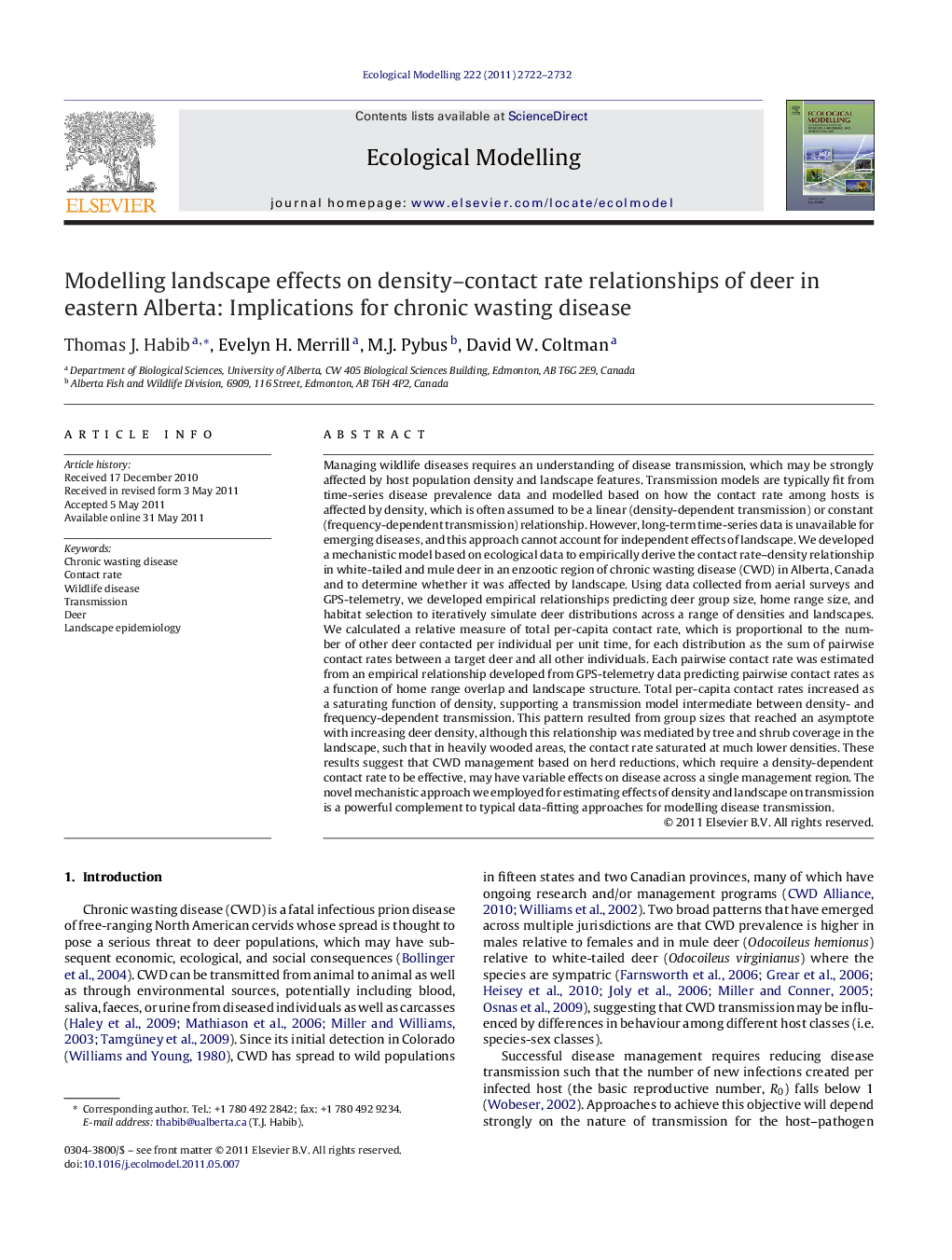| کد مقاله | کد نشریه | سال انتشار | مقاله انگلیسی | نسخه تمام متن |
|---|---|---|---|---|
| 4376789 | 1303394 | 2011 | 11 صفحه PDF | دانلود رایگان |

Managing wildlife diseases requires an understanding of disease transmission, which may be strongly affected by host population density and landscape features. Transmission models are typically fit from time-series disease prevalence data and modelled based on how the contact rate among hosts is affected by density, which is often assumed to be a linear (density-dependent transmission) or constant (frequency-dependent transmission) relationship. However, long-term time-series data is unavailable for emerging diseases, and this approach cannot account for independent effects of landscape. We developed a mechanistic model based on ecological data to empirically derive the contact rate–density relationship in white-tailed and mule deer in an enzootic region of chronic wasting disease (CWD) in Alberta, Canada and to determine whether it was affected by landscape. Using data collected from aerial surveys and GPS-telemetry, we developed empirical relationships predicting deer group size, home range size, and habitat selection to iteratively simulate deer distributions across a range of densities and landscapes. We calculated a relative measure of total per-capita contact rate, which is proportional to the number of other deer contacted per individual per unit time, for each distribution as the sum of pairwise contact rates between a target deer and all other individuals. Each pairwise contact rate was estimated from an empirical relationship developed from GPS-telemetry data predicting pairwise contact rates as a function of home range overlap and landscape structure. Total per-capita contact rates increased as a saturating function of density, supporting a transmission model intermediate between density- and frequency-dependent transmission. This pattern resulted from group sizes that reached an asymptote with increasing deer density, although this relationship was mediated by tree and shrub coverage in the landscape, such that in heavily wooded areas, the contact rate saturated at much lower densities. These results suggest that CWD management based on herd reductions, which require a density-dependent contact rate to be effective, may have variable effects on disease across a single management region. The novel mechanistic approach we employed for estimating effects of density and landscape on transmission is a powerful complement to typical data-fitting approaches for modelling disease transmission.
► We mechanistically model deer contact rates in an area of chronic wasting disease.
► Contact rates increased as a saturating function of density.
► Contacts saturated at lower densities in landscapes with extensive tree/shrub cover.
► Reducing deer density to manage CWD may have different effects across a landscape.
Journal: Ecological Modelling - Volume 222, Issue 15, 10 August 2011, Pages 2722–2732